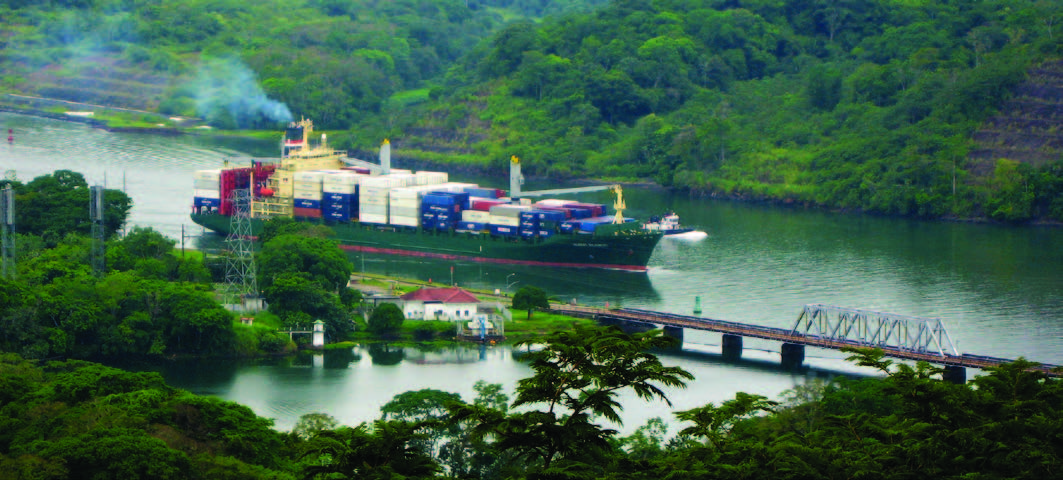The expansion of the Panama Canal has been the focus of many logistics industry discussions for almost a decade now. The debate over the potential impact of the Canal’s considerable development plans begs the question of whether widening this heavily trafficked waterway will lead to a seismic shift in China-U.S. supply chains as some analysts predict or simply have a subtle impact.
Students from two of Georgia Tech’s Stewart School of Industrial & Systems Engineering’s graduate programs paired up to examine this issue. They were from the Executive Master’s Program in International Logistics & Supply Chain Strategy (EMIL-SCS), which leads to a Master of Science in International Logistics, and the Master of Science in Supply Chain Engineering (MS SCE) program. Professor John Vande Vate, who teaches in both programs, pulled together students from the two programs to collaborate on this project.
“The collaboration is valuable to both sides,” said Vande Vate. “The executive master’s students bring broader perspective and industry knowledge and the MS SCE students bring technical and modeling skills. Combining the qualitative and quantitative perspectives leads to a much stronger result, and working with the executives in the EMIL-SCS program is a valuable experience and networking opportunity for the MS SCE students.”
The students recognized early on the value of collaborating as a team. “The group dynamic was critical to the success of our Panama Canal impact modeling project and our graduate degree education as a whole,” says Jim Blaeser, publisher of American Shipper magazine and student in the EMIL-SCS program. “Each member of our group brought a unique perspective and complementary skills to the table. The value of this group exceeded the sum of its parts. As a result, our sponsor received a useful and insightful model while the team members were afforded the opportunity to learn and grow in new directions.”
The students were able to predict the possible impacts of the Panama Canal expansion by working with a U.S.-based, national big-box retailer and highlighting the variables that would dictate the company’s supply chain strategy in the future. Essentially their analysis suggests that a meaningful increase in domestic transportation rates — perhaps stemming from a long anticipated capacity crunch — will increase the total cost but have no impact on shipping decisions.
The team developed a model of the retailer’s network to evaluate several scenarios based on changes to key variables (e.g., transportation cost elements, transit times, and service levels). Interviews and third party research provided a picture of how the shipping lines were likelyto change their services after the Canal completed its expansion project. Adjusting the model of the retailer’s network to reflect the likely changes to ocean rates and fuel costs suggests that:
• Freight volumes from China to the U.S. East Coast will increase by nearly 50 percent over 2011 level,
• Volumes to the Pacific Northwest will suffer the greatest loss with nearly half of the volume moving elsewhere in the network, and
• The Western limit of territory served by ports located in the U.S. East Coast will expand from the Ohio Valley out towards the Mississippi River.
After adjusting for a 10 percent increase in domestic transportation rates, the model suggests no additional changes to the retailer’s network in terms of cargo allocations
